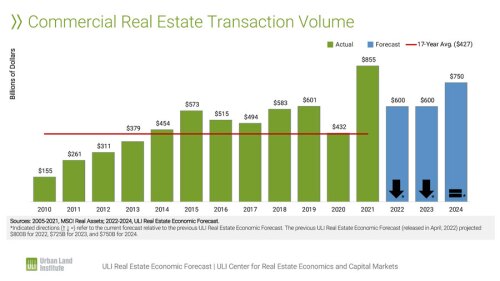This article is republished with permission from REITCafe.
Implementation of the Affordable Care Act (ACA) has driven both health care–related job growth and demand for real estate in the United States. As of February 2016, about 20 million additional people were enrolled between the ACA Marketplace, Medicaid expansion, young adults staying on their parents’ plan, and other coverage provisions. The greater number of people with coverage and the aging of the U.S. population means that health care has been one of the fasting-growing job sectors in the United States. The nation added 438,000 health care jobs during 2015, and the sector tacked on an additional 44,200 new jobs added during the month of April.
According to an April report from Moody’s Investors Services, health care REITs have expanded and diversified in recent years while maintaining reasonable levels of debt. The largest health care REITs also reported solid first-quarter earnings. Welltower reported a 9 percent growth in first-quart funds from operation (FFO), and Ventas also reported a solid first quarter with a 7 percent growth in normalized FFO. HCP bounced back to meet analysts’ expectations in the first quarter after struggling late in 2015. The year-to-date total return for health care REITs is 7.56 percent with a 5.46 percent dividend yield that is one of the best in the REIT industry.
| TREPP-i Survey Loan Spreads (50–59% LTV)* |
| This Week | Previous Week | Previous Month | End 2015 | End 2014 | |
| Industrial | 164 | 165 | 171 | 163 | 138.5 |
| Multifamily | 164 | 163 | 169 | 168 | 139.8 |
| Office | 174 | 178 | 178 | 168 | 148 |
| Retail | 164 | 165 | 171 | 168 | 139.8 |
| Average Spread | 166.5 | 167.75 | 172.25 | 166.75 | 141.5 |
| 10-year Treasury Yield** | 1.71 | 1.78 | 1.72 | 2.27 | 2.17 |
Still, health care REITs are not immune from external market challenges. They have thrived in the current low interest rate environment, but rising interest rates could threaten these REITs since they rely on long-term leased assets.
Diversity has not always proven to be a good strategy for health care REITs, especially since changing government reimbursement policies are putting financial pressure on skilled nursing and post-acute care. This pressure has prompted several of the largest REITs to spin off property portfolios to focus on private-pay facilities. In order to focus on its core businesses of senior housing, life science, and medical office buildings, HCP recently announced plans to spin off into a new publicly traded REIT. The spin-off will feature HCR ManorCare properties, as well as certain other skilled-nursing facilities. Ventas completed a similar transaction by spinning off Care Capital Properties last year.
The growing senior housing supply has also affected health care REITs. Occupancy for independent-living properties, where supply has gained 3 percent since mid-2012, was 91.3 percent in the first quarter. However, this coin has two sides. According to data from the National Investment Center for Seniors Housing and Care (NIC), the stock of assisted-living properties has grown 13 percent since mid-2012 and its occupancy fell to 88.7 percent in the first quarter of 2016. The NIC also reported that new development activity is slowing, which should quell the inflated number of properties.
As illustrated by this week’s legal ruling, the Affordable Care Act might be in for a stormy future that could ultimately affect health care–related real estate demand. Donald Trump has vowed that “on day one of the Trump administration, we will ask Congress to immediately deliver a full repeal of Obamacare.” In addition, insurers are already raising rates and, in some cases, pulling out of health care exchanges. For example, UnitedHealth announced last month that it will exit Obamacare health exchanges in 16 states during 2017, citing escalating losses from that segment.
Long-term demographic trends and a growing number of health-insured Americans support demand for health care real estate. Health care REITs are currently outperforming broader REIT markets, but risks surrounding interest rates, the supply side, and the ever-changing political landscape could affect future performance.
* TREPP-i Survey Loan Spreads levels are based on a survey of balance sheet lenders. For more information, visit Trepp.com.
** - 10 yr. Treasury Yield as of 5/13/2016.


